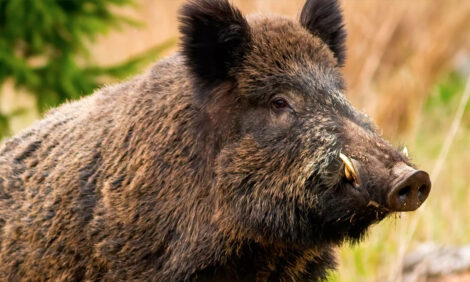



Good Biosecurity Helps Control Food-Borne Bacteria
FRANCE - The contamination of pigs with a range of potential food-borne pathogens was largely explained by herd status and linked to the level of biosecurity measures, according to this preliminary study.A preliminary study of on-farm multi-contamination of pigs by food-borne bacterial zoonotic hazards has been conducted by J. Fosse of the Nantes-Atlantic National College of Veterinary Medicine and colleagues. Their paper has been accepted for publication in Veterinary Microbiology.
The researchers explain that the application of risk analysis to control pork-borne zoonoses on farms is a major aim of the current European food safety legislation. The prevalence, levels of contamination and variations in pig contaminations according to herds and batches must therefore be studied to define relevant methods for control of zoonoses.
The aims of their exploratory study were to provide information on the prevalence and levels of infection of finisher/fattening pigs by Campylobacter spp., Clostridium perfringens, Listeria monocytogenes, Salmonella enterica and Staphylococcus aureus, and to quantify the respective effects of batches and herds.
They tested 127 pooled fresh faecal samples and 120 pooled cutaneous swab samples from 37 batches in 14 farrowing-to-finishing farms.
Campylobacter spp. was identified in all faecal samples on farms whereas L. monocytogenes was never found. Cl. perfringens was identified in 48 per cent of samples, Salmonella in two per cent, and S. aureus in 48 per cent of samples.
The decomposition of variance of on-farm prevalence and levels of contamination and a general linear model showed a systematically significant effect of herd, and an effect of batch only for levels of contamination with Campylobacter and Cl. perfringens and for prevalence of S. aureus.
Fosse and colleagues conclude that the contamination status of pigs seems to be mainly explained by herd status linked to poor biosecurity measures.
They suggest that further studies are needed to explain such correlations in order to define farm indicators for food-borne zoonotic hazards.
Reference
Fosse J., M. Laroche, N. Oudot, H. Seegers and C. Magras, 2010. On-farm multi-contamination of pigs by food-borne bacterial zoonotic hazards: an exploratory study. Veterinary Microbiology. (online ahead of print). doi:10.1016/j.vetmic.2010.06.013
Further Reading
| - | You can view the full report by clicking here. |








